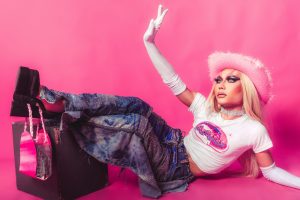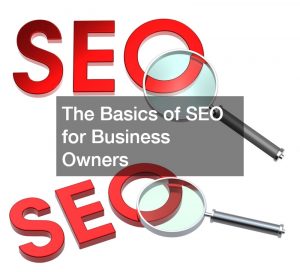For sure, the biggest challenge for big clothing brands is the ongoing pandemic. Most are struggling these days, caught flatfooted. But surprisingly, some high-end brands adapt to the conditions very well, like a fish-out-of-water that thrives.
And who sits at the top? French luxury brands are raking in sales this year. More specifically, Louis Vuitton.
Before the pandemic, the global demand for luxury brands has always been high, and their sales steadily on the rise every year. But the coronavirus outbreak has torn that pattern into pieces. Indeed, the global event has placed a seemingly insurmountable dent on retail sales, luxury brands included. The million-dollar question now, therefore, is: how did the French do it? What strategies did they implement? If we can crack that, we may be able to help the retail industry as a whole.
To note, every brand has its downsides; for sure, Louis Vuitton is no exception. Despite its dominance, the French luxury brand has its vulnerable spots, too. Amidst all the chaos, however, its sales skyrocketed and never looked so formidable.
According to 2020 rankings, Louis Vuitton remains at the top when it comes to luxury retail. This high-end brand has a value of an astounding $51.8 billion and counting. Surprisingly, other big French brands are doing well, too. Chanel and Hermes are raking it with $36.1 billion and $33 billion in value, respectively. It seems improbable, but these French brands are nailing it.
These positive results were not attained without creativity and hard work, of course. Luxury retail brands have proven their ability to adapt and respond to sudden shifts and changes in consumer behavior. Below are key takeaways on their unbelievable ingenuity.
A Self-Sufficient Strategy
First and foremost, it’s apples and oranges. You cannot compare luxury brands to other popular-but-less-pricey fashion brands. Why? It’s because they are structured differently in the market. Most main street retailers don’t have ownership of their supply chains, but luxury brands do. A quick look at such conglomerates as LVMH, Richemont, Chanel, and Kering should tell us.
Such greater control has been advantageous. Thanks to their brand’s influence and history over the years, luxury brands were able to pursue a strategy that most brands only wish for. Talk about a virtual self-sufficient ecosystem. With this, they can set their prices: from their materials to employment to what clients and customers pay for their products.
Also, the big difference in the value of these luxury groups compared to high street retailers dates back to their heritage. For example, Louis Vuitton was first founded in 1854 and Chanel in 1910. Their products have always been viewed for their raw materials and craftsmanship and rightfully so. As their brands are well-established in the market, they can mark their prices up to 20 times. And still thrive.
Plus, their unique marketing strategies and campaigns help in boosting their sales. With the increasing influence of social media, luxury brands are continuously improving their strategies to thrive during the pandemic.
Louis Vuitton may have come late to the party; it did not explore social media till lately. But now, its social media presence is huge, with over 7.5 million Twitter followers and an even bigger 35.4-million following on Instagram.
And you may want to take a page from this leading French brand. Louis Vuitton has exploited visuals in its social media campaigns, spreading a healthy mix of photos and videos. It’s all simply breathtaking. Their stills and videos almost take you to another world.
If you’re planning to expand your social media presence, you might want to impress more of your audience via videos. A high-quality head-turning sports video production, for instance, could be one of the most effective ways for your brand to go viral. Nothing tells a story better than video. Fact is, videos have outranked other mediums in marketing by a mile.
Louis Vuitton has certainly used video to the hilt. Not only are its social media campaigns filled with videos, but it has established ties with such big sports leagues like the NBA, offering its design expertise in the process.
Creative Online Shops

It is no surprise that brands are bridging the gap through virtual shopping with most of the people stuck at home. Famous names like Burberry and Harrods are turning to this method.
When the pandemic hit, they immediately set up photographic studios for customers to experience virtual shopping. This creative and innovative way has produced great results. And it’s also one way to sell your unsold stocks left behind during the outbreak.
It would be best if you explored the option. Do your due diligence and get your act together.
The Rise of Second-Hand Luxury Products
Even before the pandemic, one of the biggest challenges luxury conglomerates always faced is unsold stocks. Burberry, another famous luxury brand, has disclosed a shocking revelation in 2018. They have burned £105 million-worth of products to protect their brand.
Thanks to such a somersault of a move, the French government took a stand against luxury brands and introduced an anti-waste law. This is to ban designer clothes and other luxury companies from ruining returned and unsold items. And this will be effective until 2023.
Online retailers, however, took this opportunity to sell “second-hand” luxury goods. This became an instant hit not only for sellers but also for the customers. Even products that are considered “vintage” are often sold at a higher price than brand new.
Chanel, Kering, Louis Vuitton: These French luxury brands are definitely raking huge profits in such desperate times. In this sad time for most businesses, it’s refreshing. Their long-established brand, coupled with their spot-on marketing strategy, did not just make them survive the pandemic. Rather, it made them thrive for everyone to see. And everyone to follow.




